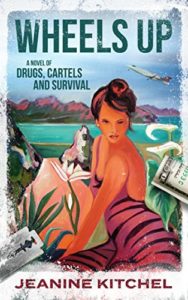by Jennifer Silva Redmond
“Overindulgence” was already the topic, and then Joy Pixley added a question on the O.C. Writers Facebook page that was perfectly timed. “How do you know when you’re writing too much description, or not enough, based on where you are in the book?”
Too Much, Too Soon
Readers need to know what people and places look like but if an author goes on too long, our attention tends to wander, because we care about people, not things—and we like conflict between characters the most.
The biggest problem with description is we usually get too much, too soon. In Chapter One, you’d be just fine describing people and places that are going to pertain to Chapter Two or Three. What you don’t need to describe at length are places and people we won’t encounter again in the book or go into detail about a place we don’t visit again until much later.
Give Us A Specific Image
Instead, pick one or two very specific adjectives that reveal something. For example, we often label places “run-down,” but what does that mean specifically? What is the clue, in looking at a house or a gas station, that would lead you to call it run-down? Pick that specific thing and describe it. When you go back to that location, show us another dirty, worn detail to help us construct a mental image of the place.
And don’t describe your main character from head to toe in the early pages. Instead show a characteristic—a way of dressing, walking, or talking that reveals something key. After all, we do this every day. We see a person ahead of us on the sidewalk and start assembling pieces of their look, actions, and behavior that let us know whether they’re going to ask for money, pitch us a religion, or just say hi. That determines whether we take out our phone or look them in the eye.
Streamline for a Faster-Moving Story
When I did the first content edit on Wheels Up—A Novel of Drugs, Cartels and Survival, I thought there was too much back story and too many descriptions in the first few chapters. At 93,000 words, it was too slow-paced for the thriller/crime genre. I sent the author, Jeanine Kitchel, a long list of cuts to make; here’s what she said later:
“I was devastated by her advice—make huge cuts, especially at the beginning. After a sleepless night or two, I digested Jennifer’s suggestions—then went to work.…Her edits helped me streamline the book—made it punchier, edgier, a faster-moving story…I felt good—really good—about the finished product. In three passes, we’d cut over 20,000 words. And I didn’t miss those words at all.”
 And just so you know that all that work was worth it, the book’s glowing reviews mention the “immediately hooked reader” of a book that “never relinquishes its momentum.” One reviewer called it an “expertly crafted work of crime fiction—fast-paced when it needs to be…:”
And just so you know that all that work was worth it, the book’s glowing reviews mention the “immediately hooked reader” of a book that “never relinquishes its momentum.” One reviewer called it an “expertly crafted work of crime fiction—fast-paced when it needs to be…:”
I don’t think the reviewers would have praised the pace if Jeanine hadn’t been able to hear my criticism (and praise) clearly. She had been willing to do the hard work to cut the excess “fat” at the beginning of the book in order to reveal the exciting story at its core.
I hate clichés, but this one contains some great advice: When in doubt—leave it out!
***

Jennifer Silva Redmond, Editor
Jennifer Silva Redmond is a freelance editor, publishing consultant, writing instructor, and speaker. Formerly editor-in-chief at Sunbelt Publications, she is on the staff of the Southern California Writers Conference, teaches at San Diego Writers, Ink, and was prose editor for A Year in Ink Vol 3. Her essays, articles, and fiction have been published in anthologies and national magazines, including Latinos in Lotusland, Books & Buzz, and A Year in Ink, Vol 11. A list of books she has edited and her client testimonials can be found at www.jennyredbug.com


Great advice, thanks! I see this all the time in early chapters and it makes me cringe, but I think it’s harder to see it in my own writing with the same clarity. The other thing I notice is awkward timing: when the author pauses a tense action scene to fully describe a bad guy who just showed up. As though the main character stopped worrying about the life-or-death situation long enough to check out the color and brand of the baddie’s clothing and analyze their hairstyle!
Yes, I just saw this in a book I am editing–big pause to describe the bad guys as they are walking towards the heroine…And then some chit-chat added in…too much for that situation!
Kudos for clarity, clear eyes, and clean cuts! A brilliant and kind piece of advice ????
Thanks for the kind words, PJ!
Great advice, we all need to be open to “positive criticism” as that will make our work
better, more succinct. As writers we can sometimes be a bit blind about our own
creations because they are our “babies,” but it never hurts to hear “suggestions”.
This is true for poetry as much as it is for a novel, get to the essence and your work
will be stronger, that doesn’t mean you have to agree with every commentary
you receive just be open to what’s being said and stick to your vision.
SO true! Listen with an open mind, and see if your beta readers all say the same thing…or more than one reader finds the same issue bothersome. Then look at it as dispassionately as you can. Hard to do, of course.